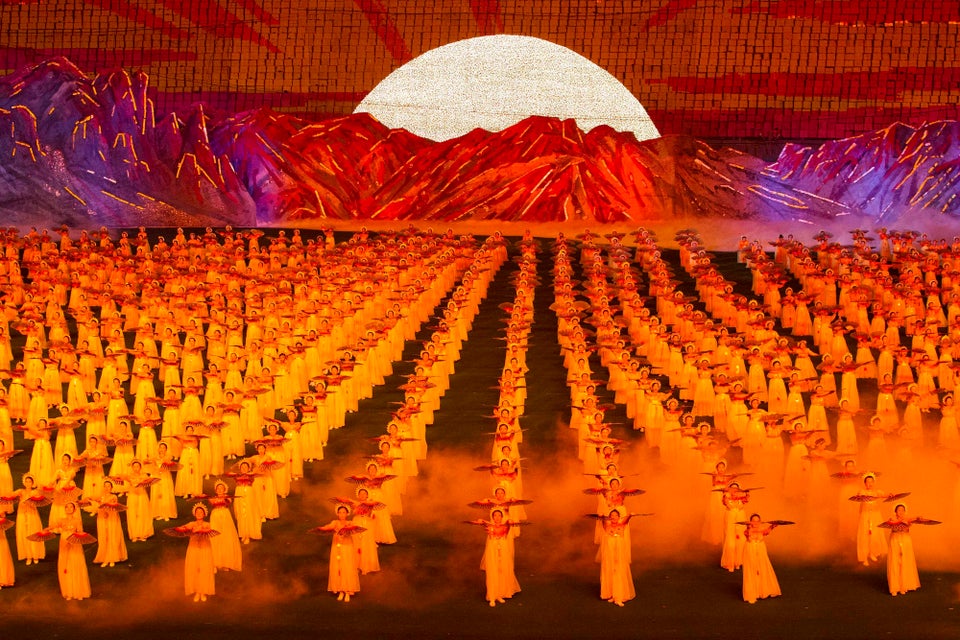At first glance it seems like a task worthy of Hercules -- manicuring lawns the size of a football field with a pair of tweezers.
And not just any lawns. These make up the gardens of one of the most sacred sites in North Korea -- the Kumsusan Palace of the Sun in Pyongyang, which hosts the embalmed bodies of the nation's founder Kim Il-Sung and his son and successor Kim Jong-Il.
So the gardening duties come with a bit of added pressure.
For a country of severe winters, the lawns are in impressive shape -- covered in thick, healthy, bright green grass that both enhances and softens the visual impact of the monumental mausoleum.
During the day, a small brigade of men and women can be seen squatting in various sections, plucking furiously at patches of turf with tools that would seem better equipped for pruning a bonsai tree than tending a meadow.
One woman, dressed in a pale blue uniform with a peaked cap to protect her from the sun, works with nothing more than a pair of tweezers and a small plastic receptacle for collecting dead grass.
Her task is two-fold -- to straighten the healthy grass and pluck out damaged or browned blades that might cause the lawn to stray to the dull side of verdant.
"We had some heavy rain recently which flattened parts of the lawns," she told AFP during a tour of the palace for foreign media covering celebrations for the 60th anniversary of the armistice that ended the 1950-53 Korean War.
"When the rain is very strong, we use brushes to stop too much water collecting in one place. Then, when it's all dried out, we need to straighten the grass out," she said.
On a separate patch of lawn nearby, a similarly uniformed woman worried away at her patch of grass with a rake no more than six inches (15 centimetres) long.
"This a new grass type. It was laid quite recently so it requires a lot of work," she said.
Unlike her tweezer-wielding colleague who had only been doing the job for a few months, she had been tending the palace gardens for six years.
She also looked after the trees and plants, but the lawns were the main responsibility and, she insisted, monotony was not an issue.
"Boring? No, not at all. It's a great honour to work in such a special place. I'm very proud of what I do to keep it beautiful," she said through one of the government minders that chaperone foreign reporters in North Korea.
North Korea's showpiece capital is a relatively green city in season. Most of the large monuments -- and there are many of them -- are offset by lawns, and the boulevards are often lined with trees and grass verges.
The banks of the Taedong river offer belts of public parkland to residents who mostly live in charmless residential tower blocks or work in equally drab offices.
Substantial effort is clearly spent on the upkeep of green areas, and small teams of men and women working on grass verges are a common sight when being bussed around the city.
Foreigners are largely prohibited from venturing out on their own.
Back in the Palace of the Sun, Kim Ho-Jung, another member of the lawn crew, supplements her tweezers with a tiny digging tool.
"There are a few barren patches, so we want to pick some of the grass from a good area and transplant it to a bad area," Kim explained.
"I never feel tired or bored. It's entirely an issue of the spirit. When you are doing the work you enjoy, those feelings don't arise," she added.
The palace lawns are tended all year round, including winter when the temperature can reach as low as -17 degrees centigrade (1.4 Fahrenheit).
"When it snows, we brush it away. It's hard work, but it keeps us warm," Kim said.
Copyright (2013) AFP. All rights reserved.
